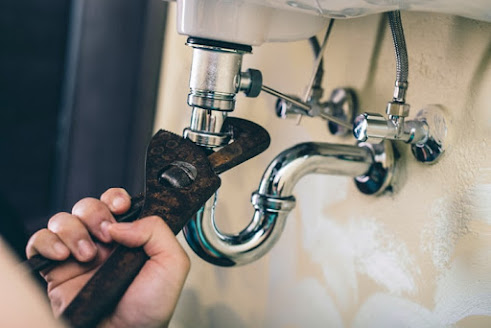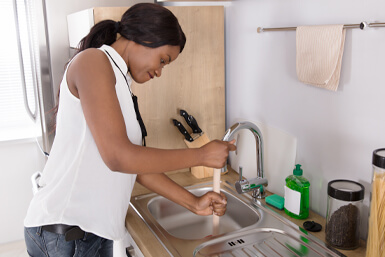Comprehending Plumbing Noises: A Guide To Fixing Them in Your Residence
Comprehending Plumbing Noises: A Guide To Fixing Them in Your Residence
Blog Article
What're your opinions on Why Do My Plumbing Pipes Make A Knocking Noise?

To identify noisy plumbing, it is very important to determine first whether the undesirable audios take place on the system's inlet side-in other words, when water is transformed on-or on the drainpipe side. Sounds on the inlet side have actually varied causes: excessive water pressure, used valve as well as tap parts, poorly connected pumps or other home appliances, improperly put pipeline bolts, and also plumbing runs having a lot of limited bends or various other constraints. Sounds on the drainpipe side typically originate from bad place or, similar to some inlet side sound, a layout containing tight bends.
Hissing
Hissing sound that happens when a tap is opened somewhat generally signals too much water stress. Consult your neighborhood water company if you believe this problem; it will certainly be able to inform you the water stress in your location and can install a pressurereducing shutoff on the inbound water supply pipeline if required.
Various Other Inlet Side Noises
Squeaking, squeaking, scraping, snapping, and touching usually are brought on by the development or tightening of pipelines, generally copper ones providing warm water. The audios occur as the pipes slide against loose bolts or strike nearby house framework. You can typically identify the location of the issue if the pipelines are revealed; simply comply with the audio when the pipelines are making sounds. Most likely you will certainly uncover a loose pipe hanger or an area where pipes exist so close to floor joists or other framing items that they clatter versus them. Attaching foam pipe insulation around the pipelines at the point of call must treat the issue. Make certain straps as well as wall mounts are safe and offer sufficient assistance. Where feasible, pipe fasteners need to be connected to substantial architectural aspects such as structure walls instead of to mounting; doing so minimizes the transmission of vibrations from plumbing to surfaces that can enhance as well as transfer them. If connecting fasteners to framework is inevitable, wrap pipelines with insulation or various other resilient material where they get in touch with bolts, and sandwich the ends of new fasteners between rubber washers when installing them.
Remedying plumbing runs that struggle with flow-restricting tight or countless bends is a last resource that needs to be embarked on only after speaking with a competent plumbing contractor. However, this scenario is fairly typical in older homes that might not have been developed with indoor plumbing or that have seen numerous remodels, specifically by amateurs.
Chattering or Screeching
Extreme chattering or shrilling that takes place when a shutoff or tap is turned on, which usually goes away when the installation is opened completely, signals loosened or malfunctioning interior parts. The service is to change the shutoff or tap with a new one.
Pumps as well as home appliances such as washing makers and also dish washers can move electric motor sound to pipes if they are incorrectly attached. Connect such products to plumbing with plastic or rubber hoses-never inflexible pipe-to isolate them.
Drain Sound
On the drainpipe side of plumbing, the principal objectives are to get rid of surface areas that can be struck by falling or rushing water and to shield pipes to include unavoidable audios.
In new building and construction, bathtubs, shower stalls, toilets, and also wallmounted sinks and also basins need to be set on or against resilient underlayments to lower the transmission of noise through them. Water-saving commodes and also faucets are much less noisy than standard models; mount them instead of older types even if codes in your location still allow making use of older fixtures.
Drains that do not run up and down to the cellar or that branch into horizontal pipeline runs supported at flooring joists or various other mounting existing particularly troublesome noise troubles. Such pipes are big enough to radiate significant vibration; they likewise lug considerable amounts of water, that makes the circumstance worse. In brand-new building, specify cast-iron dirt pipes (the big pipelines that drain toilets) if you can afford them. Their massiveness has a lot of the noise made by water going through them. Likewise, prevent transmitting drainpipes in walls shown to bedrooms and also rooms where individuals collect. Wall surfaces consisting of drainpipes ought to be soundproofed as was described earlier, making use of dual panels of sound-insulating fiberboard as well as wallboard. Pipelines themselves can be covered with special fiberglass insulation created the purpose; such pipelines have an invulnerable vinyl skin (in some cases consisting of lead). Outcomes are not always adequate.
Thudding
Thudding sound, frequently accompanied by shivering pipelines, when a tap or device shutoff is turned off is a problem called water hammer. The noise and also vibration are caused by the reverberating wave of pressure in the water, which all of a sudden has no place to go. In some cases opening a shutoff that discharges water quickly right into an area of piping having a restriction, arm joint, or tee installation can produce the same problem.
Water hammer can normally be healed by installing fittings called air chambers or shock absorbers in the plumbing to which the problem valves or faucets are attached. These devices enable the shock wave developed by the halted circulation of water to dissipate in the air they include, which (unlike water) is compressible.
Older plumbing systems may have brief upright sections of capped pipe behind walls on tap competes the exact same objective; these can eventually full of water, reducing or ruining their effectiveness. The treatment is to drain pipes the water supply completely by shutting off the main supply of water shutoff and also opening all taps. Then open the primary supply valve as well as shut the faucets one at a time, beginning with the faucet nearest the shutoff and also finishing with the one farthest away.
WHY IS MY PLUMBING MAKING SO MUCH NOISE?
This noise indeed sounds like someone is banging a hammer against your pipes! It happens when a faucet is opened, allowed to run for a bit, then quickly shut — causing the rushing water to slam against the shut-off valve.
To remedy this, you’ll need to check and refill your air chamber. Air chambers are filled with — you guessed it — air and help absorb the shock of moving water (that comes to a sudden stop). Over time, these chambers can fill with water, making them less effective.
You’ll want to turn off your home’s water supply, then open ALL faucets (from the bathroom sink to outdoor hose bib) to drain your pipes. Then, turn the water back on and hopefully the noise stops! If you’re still hearing the sound, give us a call to examine further.
Whistles
Whistling sounds can be frustrating, as sometimes the source isn’t easily identified. However, if you can pinpoint which faucet or valve that may be the cause, you’ll likely encounter a worn gasket or washer — an easy fix if you replace the worn parts!Whistling sounds from elsewhere can mean a number of things — from high water pressure to mineral deposits. Your best plan of attack here is to give our plumbing experts a call. We’ll be able to determine where the noise is coming from and what the cause may be, then recommend an effective fix!
Cracks or Ticks
Cracking or ticking typically comes from hot water going through cold, copper pipes. This causes the copper to expand resulting in a cracking or ticking sound. Once the pipes stop expanding, the noise should stop as well.
Pro tip: you may want to lower the temperature of your water heater to see if that helps lessen the sound, or wrapping the pipe in insulation can also help muffle the noise.
Bangs
Bangs typically come from water pressure that’s too high. To test for high water pressure, get a pressure gauge and attach it to your faucet. Water pressure should be no higher than 80 psi (pounds per square inch) and also no lower than 40 psi. If you find a number greater than 80 psi, then you’ve found your problem!
Next step is to give us a call in order to install a pressure regulator. Trust us, you don’t want to wait to resolve this issue. Not only is the sound annoying, but high water pressure can be destructive to your home — including damaging certain appliances, like your washer and dishwasher.
Dripping
You might be accustom to the slow quiet drip your kitchen faucet makes. You might have even tuned out your bathroom sink dripping and drabbing all day long — but it’s time to find its cause.
A slow drip could signify a variety of easy to fix issues, such as a worn out O ring, or loose part. And by ignoring the drip, you could be wasting up to 2,000 gallons of water a year! So start conserving water — get it looked at ASAP.
https://www.pwessig.com/blog/2018/december/why-is-my-plumbing-making-so-much-noise-/

Do you enjoy reading up on Diagnose Unwanted Plumbing Noises? Try to leave a remark below. We would be delighted to see your responses about this piece. We are looking forward that you visit us again in the future. Kindly take the time to promote this blog post if you enjoyed it. Thanks so much for your time spent reading it.
Top-notch fix? Dial! Report this page